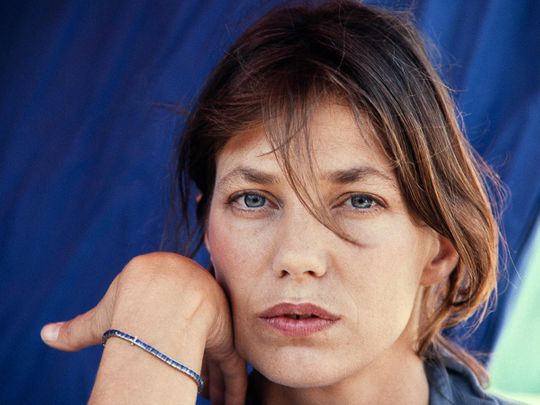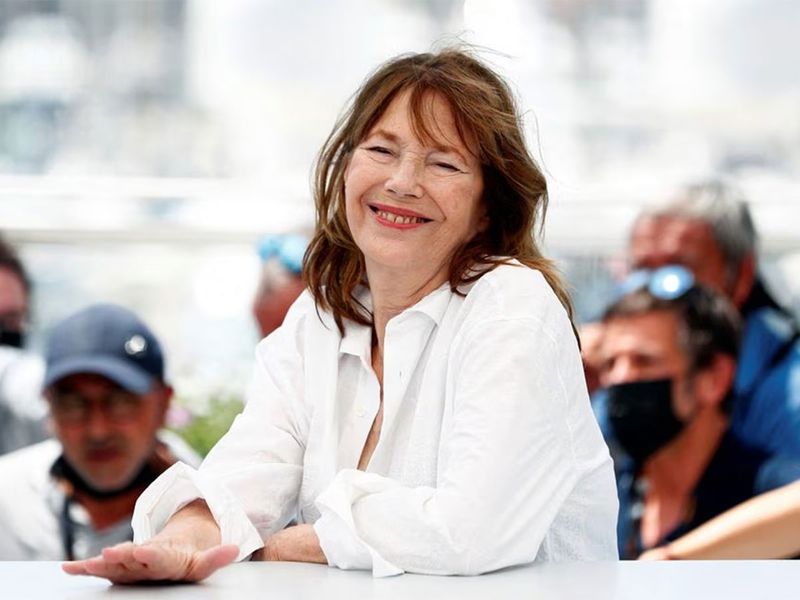
Jane Birkin, who died on Sunday at the age of 76, was a quixotic fashion muse. Unlike society figures like Nan Kempner or Loulou de la Falaise, who landed on best-dressed lists because they had scores of the most rarefied couture, Birkin preferred khakis from Army surplus stores, men's jackets and baskets as handbags.
The story of how she came to inspire the most famous handbag in fashion history - the Hermes Birkin bag - paints the picture of her peculiar influence well. The actress and singer was upgraded to first class on a flight from Paris to London in the mid-1980s, with one of the wicker baskets she used as purses in tow. (She wore them from the 1960s onward, pairing them with see-through crochet minidresses as well as jeans and T-shirts.)

When she put her basket in the overhead compartment, as her retelling went, her stuff spilled out onto the floor. She told her seatmate, Jean-Louis Dumas, who was chief executive and artistic director of his family's brand Hermes, that she'd had trouble finding a good weekend bag, and he had the atelier rework their existing haut courroies into something more streamlined.
Such is the Birkin mystique: her pastoral idiosyncrasy, picked up at a London street fair, inspired the pinnacle in luxury design and desire, which sells for upward of $8,500. She knew how to make the simplest things feel special, even extraordinary in a private way, which was what drew luxury houses like Hermes to her, as well as our great modern designers, from Hedi Slimane to APC's Jean Touitou to Martin Margiela. (The punchline: Birkin rarely carried the bag because of her tendinitis. Part of her attraction to men's blazers was their enormous pockets, perfect for stuffing, and in her last years she usually wore belt bags and straw market bags. Her last partner, filmmaker Jacques Doillon, eventually ran over the original basket with his car.)
The house of Hermes shared a statement on Sunday afternoon on Birkin's passing. "With a shared sensitivity, we grew to know each other, we discovered and appreciated the extent to which Jane Birkin's soft elegance revealed an artist in her own right, committed, open-minded, with a natural curiosity of the world and others."
Born in 1946 in London, Birkin became synonymous with "French girl style" - a term now so overused it feels meaningless, but a study of Birkin's look reinforces why it endures. In the 1960s, she was a Swinging London heroine of psychedelic cinema, winning the lead role in the French film "Slogan" alongside Serge Gainsbourg. It was in that film that Birkin would come to know Gainsbourg, and the world would come to know her strangely citrine French. (She was cast in the film despite not speaking the language).
Her appearances alongside the Lothario Gainsbourg, in crochet dresses and her little basket on her arm, codified her as a paradoxical ingnue: childlike and boyish and yet somehow wildly sophisticated. Her duet with Gainsbourg, "Je t'aime mon non plus," released the same year as "Slogan," embodies her shocking appeal: her voice is breathy and at times pip-squeaky, eventually succumbing to whispers.
With Gainsbourg, she had one child - Charlotte, who along with her younger sister Lou Doillon is renowned as an actor and muse; her first daughter Kate Barry died in 2013 - and although they never married, she would be associated with Gainsbourg for the rest of her life. (He died in 1991.)
It was an alliance she encouraged herself; when I first interviewed her in 2016, she brought up Gainsbourg and his unsavory reputation without my even asking, saying, "I have to defend him. And so I will." Gainsbourg struggled with alcohol addiction, once demeaning Whitney Houston to her face on live television in the late 1980s.
Birkin seemed to understand his reputation but also saw how, in a country like France in the 1960s and '70s, he represented a sublime amount of freedom. Her ease with her strange appeal, at first, and later her unstudied casual style, that seemed so quintessentially French. She had a mind that could seem, in passing conversation, simply quirky, and then, a flash later, delightfully original. She thought women were at their prettiest after 40, she told me, saying that her daughters weren't old enough yet but would then "probably be at their most sumptuous."
By the 1980s, when her romance with Gainsbourg ended and her marriage to Doilloin began, her style had shifted from mod and glam to understated and casual. Gainsbourg had always told her "to lick your lips and toss your hair back," she told me last year, "And one day I said, 'No, I won't do that anymore!'" She adopted a uniform of jeans, men's cashmere sweaters, scoop neck T-shirts with overstretched necklines, and workman's trousers, with men's jackets thrown overtop. (To view the look in its most glorious form, see Agns Varda's meta-tribute "Jane B. par Agnes V.")
It was this sensibility that has inspired nearly every designer of the past 30 years, because her way of wearing, say, oversized men's pants and fastening them with the right belt to make them paper bag-like, was so original, so unstudied and cool. She came to embody the often-discussed but still little understood line between fashion and style: style is a representation of pure originality, of some interior strangeness and individualism.
For all her influence, Birkin only did one collaboration - last fall, with APC's Touitou. The pieces were almost alarmingly simple, drawn from that uniform of worn basics. For anyone who knows Birkin solely through old pictures posted to Instagram and fashion magazine throwback stories, they might have been surprised, expecting Proust's madeleines and instead getting plums in the icebox.
But Birkin, Touitou texted me on Sunday while sailing off the west coast of Italy, "had that sense of perfect proportions that only few people have. Her casualness was extremely precise." She was exacting in how fabrics felt against her body, over her arms and legs as she moved through the world, whether she was attending movie premieres or buying fruit at the market. What woman doesn't envy understanding of her own desires, her own comfort?
The truth is that the fashion world cannot exist without such characters - those who see something we all see, all wear, and go about our days assuming is just to be worn and thought about one way, but who somehow see that thing as a funky possibility. Birkin reminds us that style is not merely a frivolous chase to all adapt the same agreed-upon look; the most lasting legacies begin with one person with outrageous, delicious courage who cannot help but express herself.










